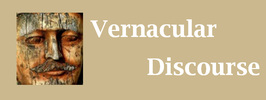|
Metonymy & Synecdoche
|
to substitute a proper name for one of its parts or attributes, or vice versa; from the Greek meta 'change' and onoma 'name'; synecdoche means 'simultaneous understanding.'
|
Examples
|
All hands on deck.
(hands for crew) The suits entered the court. (suits for lawyers) He's just bought a new set of wheels. (set of wheels for car) The strings were missing two double basses. (strings for string players, and double basses for double bassists) Winston Churchill I have nothing to offer but blood, toil, tears and sweat. (metaphorical & synesthetic representations of armed struggle) |
Russia is opposed to further military action.
(Russia for Russian government) The Palace announced the royal birth at noon. (The Palace for a royal spokesperson) The Pentagon banned the army from using Chinese-made berets. (The Pentagon for the military high command) Edward Bulwer-Lytton The pen is mightier than the sword. (pen for thinking and persuasion, and sword for military action) George Meany Capital has learned to sit down and talk with labor. (capital for the business class, and labor for the working class) |
Richard Nixon
In Europe, we gave the cold shoulder to De Gaulle, and now he gives the warm hand to Mao Zedong.
In Europe, we gave the cold shoulder to De Gaulle, and now he gives the warm hand to Mao Zedong.
Purpose
Metonymy and synecdoche are like metaphor. Disentangling these three threads is a knotty business. Like metaphor, metonymy and synecdoche represent things more vividly. To disambiguate metonymy from synecdoche is to see them as follows:
- Metonymy: a thing is represented by its attributes or a whole
- Synecdoche: a thing is represented by some of its parts
|
Metonymy
bottle for wine boots for soldiers bookworm for readers wealth for rich people give them the finger for an insult Shakespeare Friends, Romans, countrymen, lend me your ears. |
Synecdoche
bread for food hands for helpers cold steel for sword notes or coins for money T.S. Eliot There will be time, there will be time To prepare a face to meet the faces that you meet |
These are perhaps distinctions without a difference. Like metaphor, metonymy and synecdoche simplify complexities and lend more human dimensions and attributes to things - see also synesthesia and personification.
Usage
Use metonymy and synecdoche to make things more immediate, vivid, tactile. Representing things on the human scale is one way to do this.
The Human Scale
Some metonyms become standard representations of things.
Commonplace Metonyms
|
dish (food)
tongue (languages) the Bard (Shakespeare) Fleet Street (the British press) boots on the ground (soldiers) Beijing (the Chinese government) Westminster (the British parliament) Watergate (maximum political scandal) the top brass (senior military commanders) |
The Vatican (the Roman Catholic Church)
the White House (the American president) the Bench and the Bar (judges and lawyers) Detroit (the American automobile industry) Wall Street (the American financial markets) Brussels (institutions of the European Union) Silicon Valley (the American high-tech industry) Downing Street (the British prime minister/government) the storming of the Bastille (the start of the French Revolution) |
Vividness
Like metaphor, we can use metonymy and synecdoche to represent things vividly. Select representations carefully to create desired qualities of vividness and simplicity.
Metonymy in Shakespeare
|
Hamlet
O most wicked speed, to post With such dexterity to incestuous sheets! Incestuous sheets stands for marriage. The serpent that did sting thy father's life Now wears his crown. Serpent stands for Hamlet's uncle, Claudius. Something is rotten in the state of Denmark The state of Denmark today stands for any state or institution we want to represent as morally corrupted. |
Othello
Till now some nine moons wasted Nine moons stands for nine years. The wealthy curled darlings of our nation Wealthy curled darlings stands for young noblemen. An old black ram is tupping your white ewe. Black ram stands for Othello; white ewe for Desdemona. And hills whose heads touch heaven Heads for peaks and heaven for sky |
The Shakespeare examples show why we should consider metaphor, metonymy and synecdoche a family. They share genes but have different personalities. In fact, the figures of speech are an extended family:
- We find family connections with personification and transferred epithet in stinging serpents and incestuous sheets.
- We find the family curls of synesthesia in curled darlings.
- We find the family prejudice of racism in the dysphemism of black ram.
